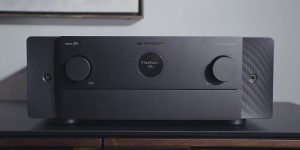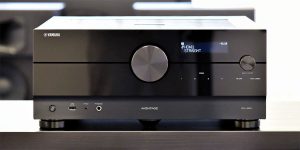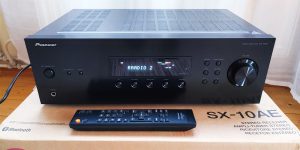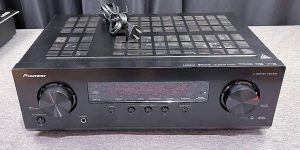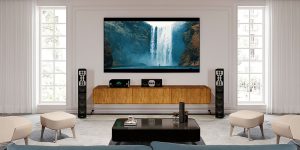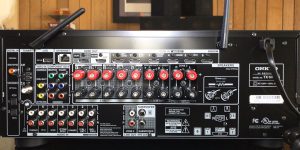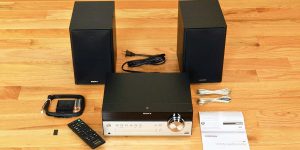In the world of home theater systems today, the choice is vast and varied. You can find devices to suit your tastes, functionality needs, and finances, but it’s still quite easy to get confused when making your final choice. In this article, I paid attention to the best 9.2 receivers of 2025, and if you have enough money (because this is not a cheap category), I will help you identify the brand and the model that meets your desires. After all, buying a technique of this rank, you probably expect it will serve you for years, meet the requirements of modernity, and not become obsolete soon. If so, I invite you to get acquainted with my selection.
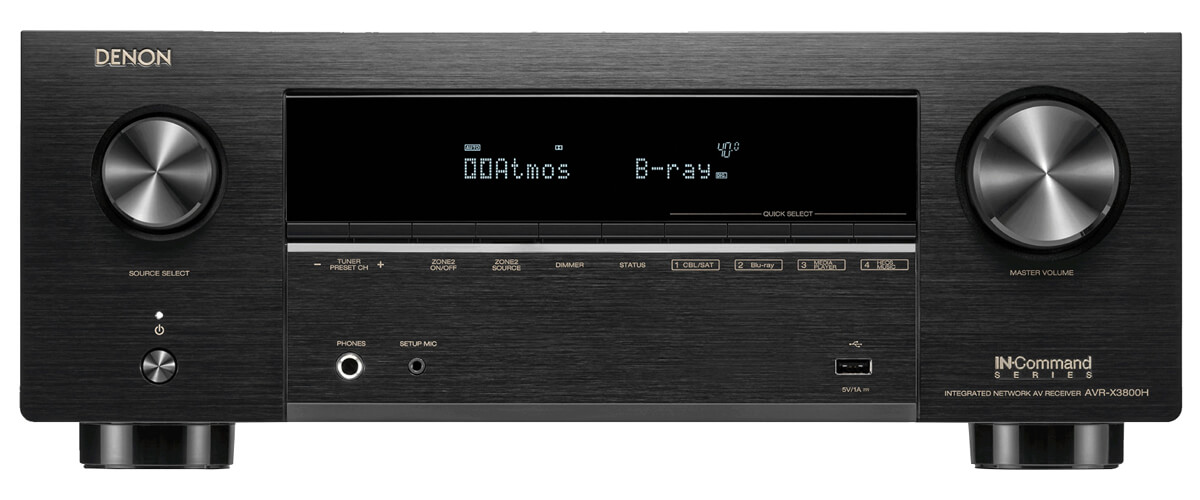
9-channels receivers comparison table
| Name | Channels | Power output | HDMI in/out | Bluetooth/Wi-Fi | Review |
|---|---|---|---|---|---|
| Denon AVR-X3800H best overal | 9.4 | 105W/8 Ohm, 135W/6 Ohm | 6/3 | yes/yes | Review |
| Onkyo TX-RZ50 also great | 9.2 | 120 W/8 ohms | 7/2 | yes/yes | Review |
| Yamaha RX-A6A | 9.2 | 150W/8 Ohm | 7/3 | yes/yes | Review |
What 9-channel receivers did we test?
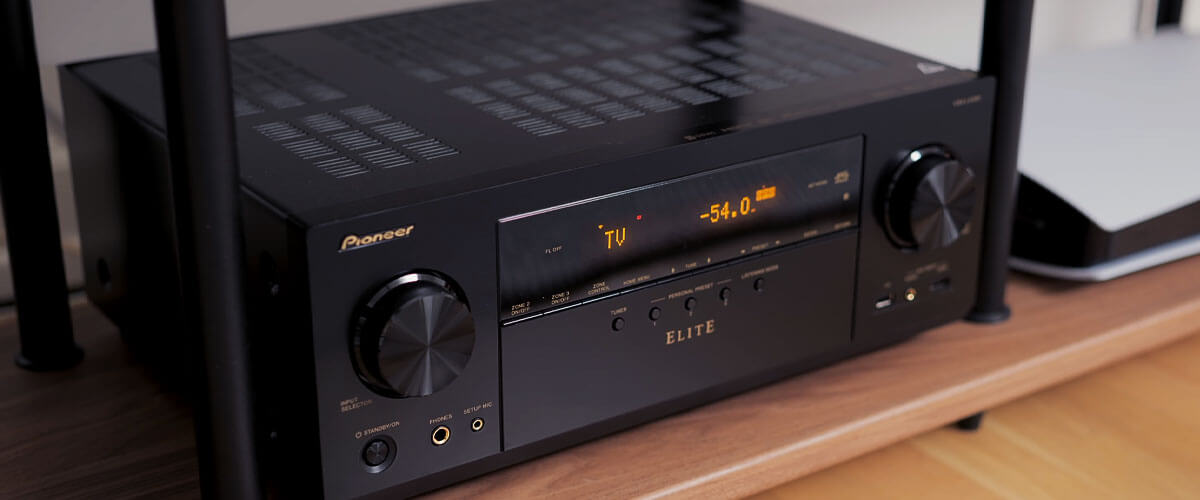
I have tested many great models to help you choose the best 9-channel receiver, but only 5 are included in the rating. It happened so because, besides my personal impressions from testing, I also considered customer reviews from various retail sites and the opinions of other users and experts from popular audio forums. Based on such objective collective opinion, such models were not included in the list, although they were highly appreciated by me:
- Pioneer Elite VSX-LX305 did not reach the top because there is a newer, better model with more functionality in the review – Pioneer Elite VSX-LX505.
- Marantz CINEMA 50 is not included in this review for various reasons. It’s newer but not much better than the model on my list, the Marantz SR7015. And considering the price of the Marantz SR7015 (at the moment), the choice is obvious.
Best 9.2 AV receivers reviews
| Table of content |
|---|
| Denon AVR-X3800H – best overall |
| Onkyo TX-RZ50 – also great |
| Yamaha RX-A6A |
| Marantz SR7015 |
| Pioneer Elite VSX-LX505 |
Denon AVR-X3800H – best overall

One of the most popular models today, the Denon AVR-X3800H 9.2-channel receiver, has become the crown of my rating. This AVR’s first and foremost advantage compared to other models on the list is its optimal price/quality ratio.
Traditionally, I will start with the design and construction quality. Denon is always a good receiver, which is only a little short of the premium Marantz (in the review, there is a model SR7015 at a higher price precisely because of the quality of internal components). But in general, AVR-X3800H can serve you for decades without losing the quality of work. This applies to both sound and construction details. Why change something that works well? Apparently, that’s how Denon thinks, and they haven’t changed the design (unlike Marantz) for a very long time. I personally love the bright LCD, which allows you to see everything, and the high-precision controls. The narrow buttons right below the monitor, on the other hand, are a pain. They leave fingerprints every time you press them. And they’re generally uncomfortable. But that’s not why we love Denon.
By buying AVR-X3800H, you can create a system of 11.4 with the help of an additional amplifier and two additional subs. The receiver’s power of 105 W (8 Ohm, 20Hz – 20kHz, 0.08%, 2ch) is enough, and you won’t sacrifice the quality at high volume thanks to the low distortion coefficient. Still, frankly, the AVR-X3800H isn’t a powerful receiver, and that can be a drawback if you like to really feel the sound.
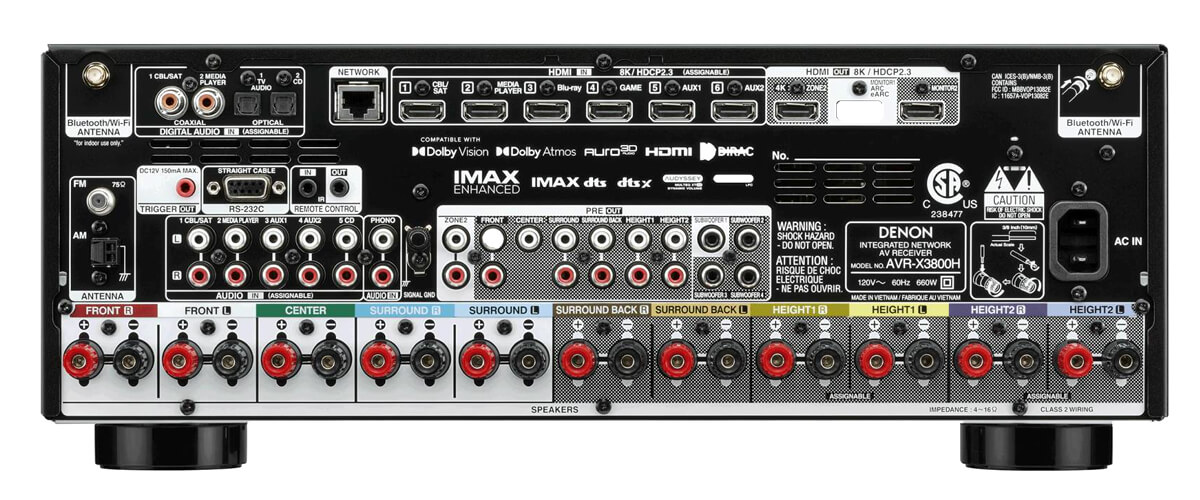
Being part of Denon’s Soundmaster lineup and released in 2022, the AVR has modern features that will keep you from thinking about upgrading for a long time. However, amidst the bonuses, there are some compromises. For example, the AVR-X3800H has only 6 HDMI inputs, which aligns more with budget options. And yet all of them have version 2.1 and support HDCP 2.3 functionality, 8K video in Dolby Vision and HDR10+ formats, upscaling up to 8K, and end-to-end 3D signal transmission. Enough for any content today and in the near future. The HDMI outputs support eARC and allow you to stream 4K video to a second zone (audio is also only for 2 zones). Perfect for those who like to separate from their kids in the evenings so they don’t have to watch the same cartoon for the hundredth time.
Since I’m talking about movie nights, it’s worth mentioning that with this receiver, you’ll also be watching content with encoded DTS:X and Dolby Atmos soundtracks, as well as the less popular but “advanced” IMAX Enhanced, 360 Reality Audio and Auro 3D, in each of which it sounds great, smooth and detailed. With the Yamaha RX-A6A on my list, you also get accessibility to a wide range of advanced content, but the Denon is about $800 cheaper.
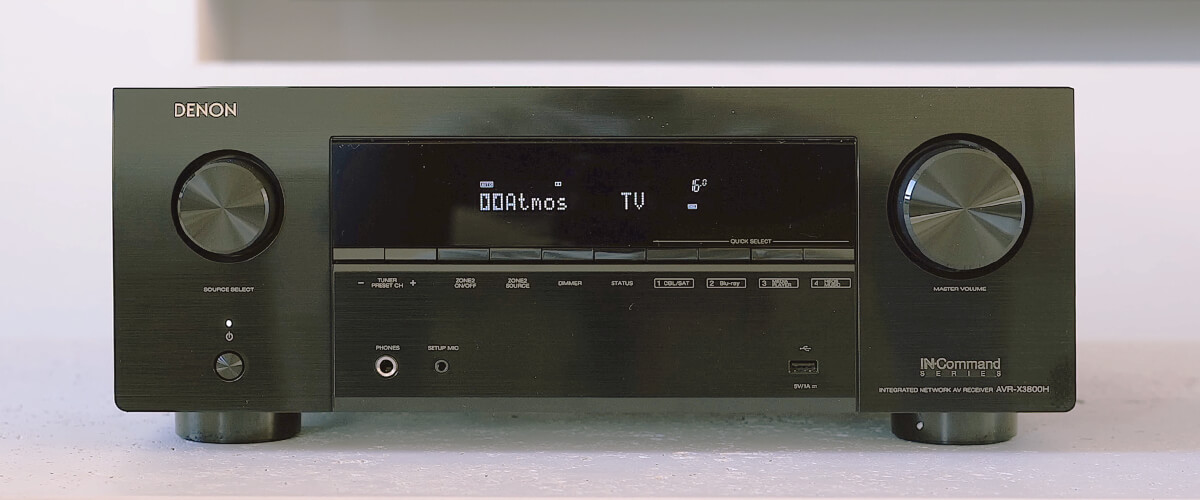
If you want to listen to high-quality music around the house, with the AVR-X3800H, you can also do that. The built-in HEOS system, Wi-Fi and Bluetooth, AirPlay 2, support for streaming services, and voice assistants will help you do that. Although all wireless options are quite simple and do not have advanced versions, I still noted quite stable operation without excesses.
Denon AVR-X3800H is the best 9.2 receiver on my list in terms of value for money. The manufacturer paid little attention to the design and limited the number of HDMI ports, but the main one remained true to its traditions – the receiver sounds clear and nuanced with any surround sound format. It supports more advanced versions (IMAX Enhanced, 360 Reality Audio, and Auro 3D). You can connect 4 subs, which the manufacturer compensates for its “innate” lack of bass range. With an additional amplifier, you get 11 processing channels and can use the receiver as a multi-zone. Wireless capabilities are also extensive and will satisfy the modern user wholeheartedly, holding good signal strength for Wi-Fi and Bluetooth, AirPlay 2.
However, there are some drawbacks. The 105W power rating makes the AVR-X3800H one of the weakest in my rating. And if we’re talking about an 11-channel system, it’s not enough at all. However, it depends on the size of your room. Also, this model can only work for 2 zones, the minimum among other competitors.
Key specs
- Channels: 9.4.
- Power output: 105W/8 Ohm, 135W/6 Ohm.
- HDMI inputs/outputs: 6/3.
- Video functions: 8K/60Hz, 4K/120Hz pass-though, upscaling up to 8K.
- Bluetooth/Wi-Fi: yes/yes.
- Streaming services: AirPlay 2, Spotify, TuneIn, Deezer, Tidal, Netflix, Amazon Prime.
- Supports: HDMI ARC, HDMI eARC, HDMI CEC, HDCP2.3, HDR10+, Dolby Vision.
- Surround sound: DTS:X, DTS Neural:X, DTS Virtual:X, Dolby Atmos, DTS HD Master, Dolby TrueHD, Dolby Atmos Height Virtualization, Dolby Atmos Music, Auro 3D.
Pros
- Ability to expand the system 9.2 to 11.4.
- Supports the highest quality video and surround sound today and will not need to be upgraded for long.
- Wireless capabilities are not limited and show stable performance, although they work on basic settings.
Cons
- The power may not be enough to create a large multimedia system.
- Multiroom is only for 2 zones, unlike other receivers on the list.
Onkyo TX-RZ50 – also great
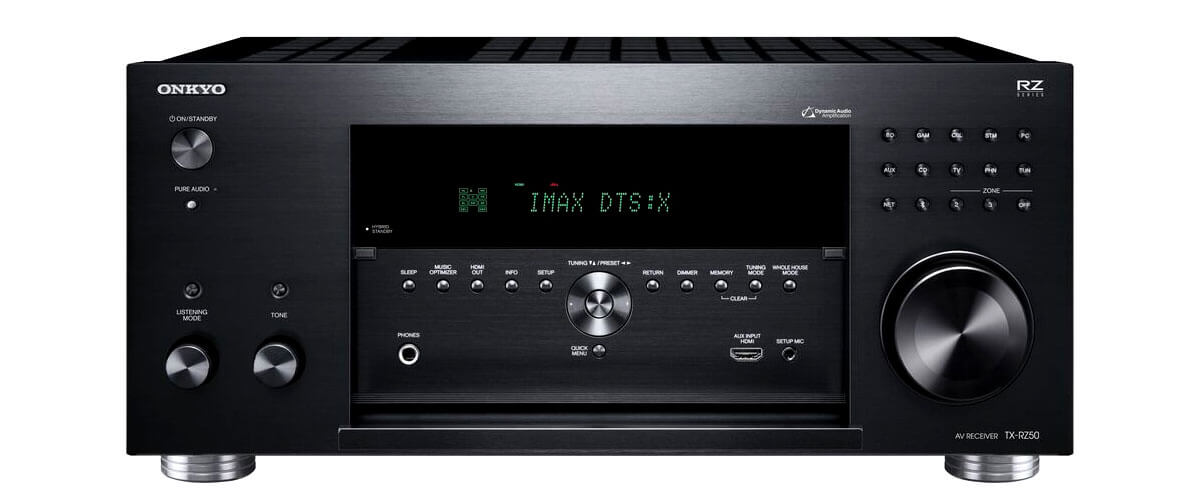
Also, a great receiver of my selection, the Onkyo TX-RZ50 is a frequent choice for those who want to get more and pay less. The receiver was released in 2021 and cost slightly less than the previous Denon AVR-X3800H. It also can expand the system to a 7.2.4 configuration with additional pre-outputs but, unlike the AVR-X3800H, with 2 subs only.
A lower price point against a backdrop of identical features (and some of which the Onkyo TX-RZ50 has even better than the winner of my chart) means compromises. For example, here I see inconvenient small buttons on the control panel, which both look unreliable and will eventually get clogged with dust. In addition, they are very small, and the captions on them are not readable at all. However, with proper handling, you can extend the life of any rank of equipment. But even the weight of the design at 30.9 lbs speaks of the simplicity of the components used in it.
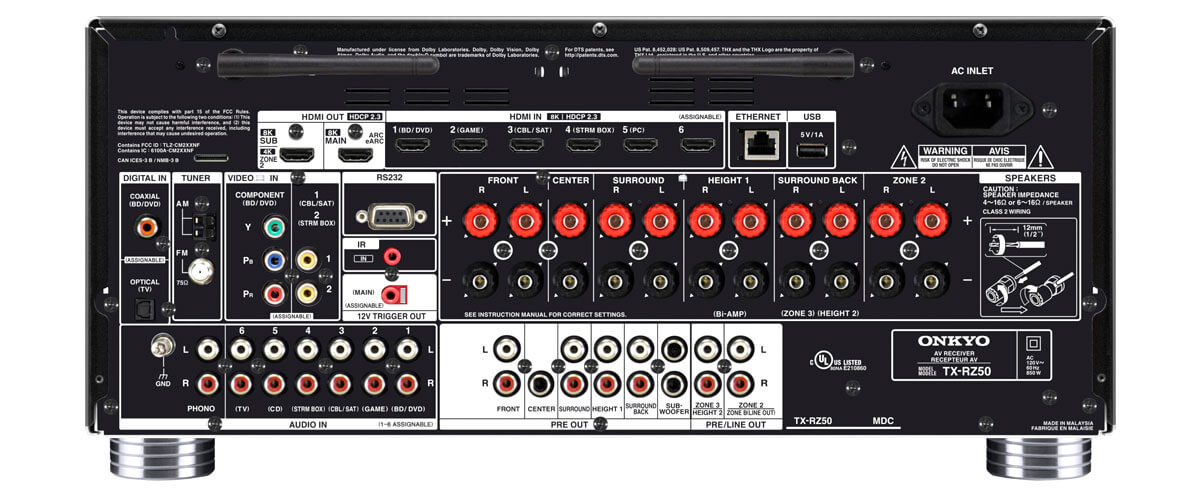
The advantages of the Onkyo TX-RZ50 include:
- Higher power output of 120 W (8 Ohms, 20 Hz – 20 kHz, 0.08% THD, 2 ch);.
- More (though still insufficient) HDMI (7 inputs) than AVR-X3800H. With the same functionality,.
- Audio distribution to 3 rooms;.
- Advanced wireless functionality: DTS Play-Fi Ready and Bluetooth with support for AAC and aptX HD codecs. This automatically means your Android or iOs will be compatible with the AVR;.
- The receiver is THX Certified Select.
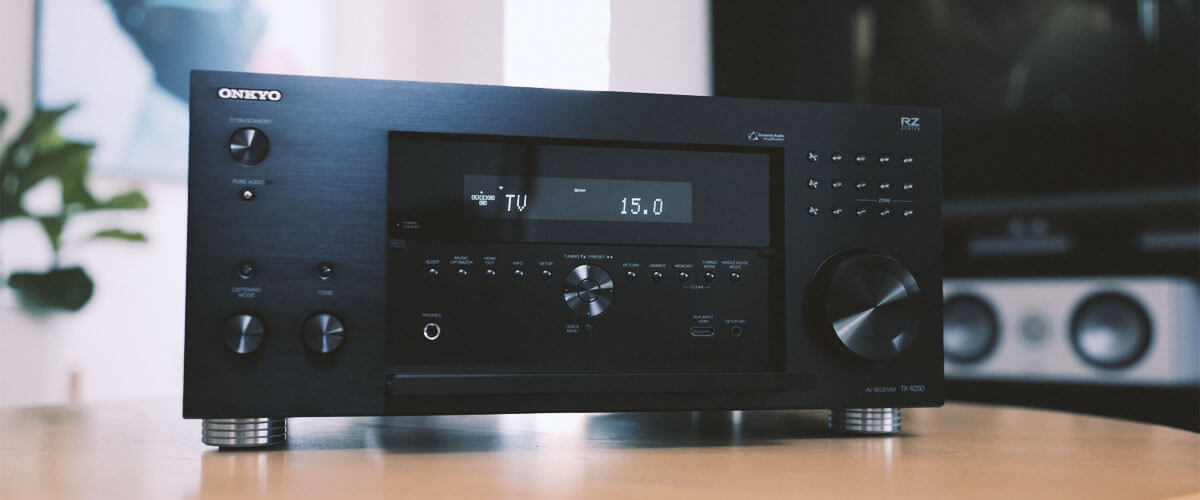
On the downsides:
The receiver can work with Hey Google or Alexa voice assistants, but you’ll have to get a separate device for that;
Most important: The TX-RZ50 only supports two surround formats, DTS:X and IMAX Enhanced. That’s very high-quality surround sound, which is more appreciated by connoisseurs. But if you’ve been dreaming of Dolby Atmos, it’s gone.
The Onkyo TX-RZ50 is the best budget 9.2 receiver, with some compromises in build quality and limited surround sound capabilities. For slightly less money than the AVR-X3800H, you get almost the same set of features: 11 channels with an external amplifier, support for surround sound formats (including IMAX Enhanced), 8K video, and advanced DTS Play-Fi Ready and Bluetooth wireless technologies with support for AAC and aptX HD codecs. You can serve 3 zones in a home with this AVR.
So why isn’t the TX-RZ50 at the top of the list in this case? It’s all about build quality and overall soundstage, both of which Onkyo has slightly but inferior to the reliable Denon with its warm, bright, dynamic sound. Everything is ordinary, from the awkward little buttons to the light, simple design to the ordinary sound—strong and clear but completely off-color and monotonous. Nevertheless, Onkyo has a lot of fans, and it is definitely a good receiver to invest in.
Key specs
- Channels: 9.2.
- Power output: 120W/8 Ohm, 250W/6 Ohm.
- HDMI inputs/outputs: 7/2.
- Video functions: 8K/60Hz, 4K/120Hz, 4K/60Hz pass-through, video upconversion (up to 1080p and 8K) for analog and HDMI sources.
- Bluetooth/Wi-Fi: yes/yes.
- Streaming services: AirPlay2, Deezer, Tidal, Pandora, Spotify, Amazon Music HD, TuneIn.
- Supports: HDMI ARC, HDMI eARC, HDMI CEC, HDCP2.3, HDR10, HDR10+, Dolby Vision.
- Surround sound: DTS HD Master, DTS Neural:X, Dolby TrueHD, Dolby Surround, Dolby Digital Plus, Dolby Atmos Height Virtualization, Dolby Atmos, IMAX Enhanced.
Pros
- 3-Zone Audio Transfer.
- DTS Play-Fi Ready and Bluetooth support for AAC and aptX HD codecs ensures high-quality signal transmission and wide compatibility with devices with different OS.
- THX Certified Select means a high sound rating.
Cons
- Small, awkward, and unreliable control buttons.
- Lightweight design implies the use of inexpensive internal components.
- Can connect 2 subs, not 4, like the Denon AVR-X3800H.
Yamaha RX-A6A
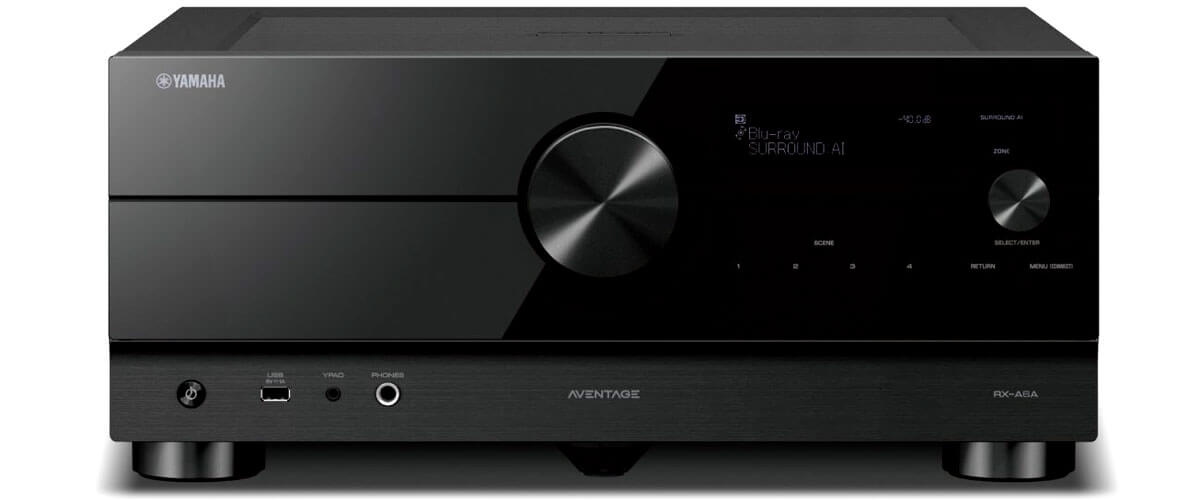
Yamaha RX-A6A has several advantages over the Denon AVR-X3800H but costs several hundred dollars more. For this difference, you can buy a decent speaker system, which will suit those not used to saving money.
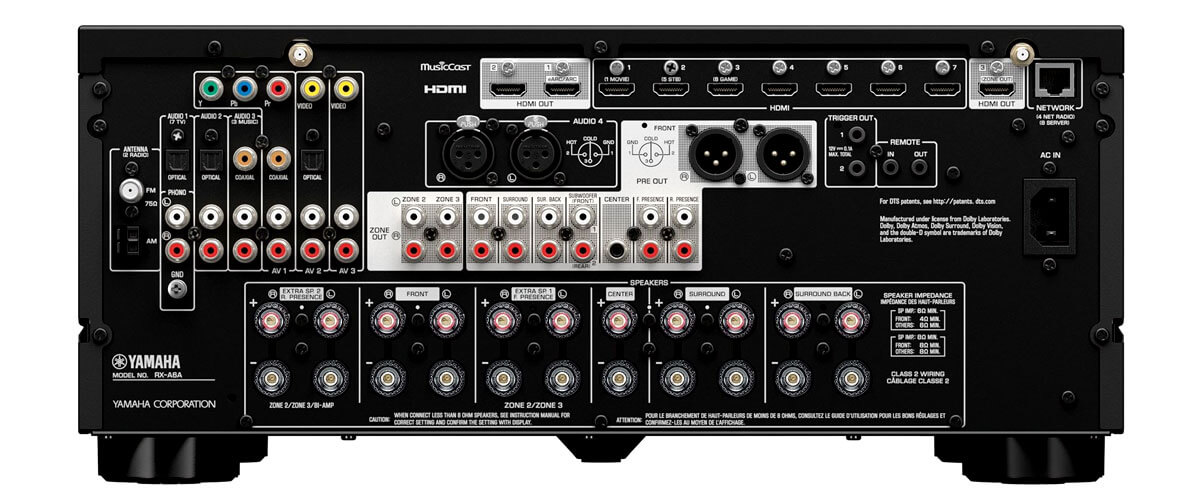
So, the RX-A6A Aventage series can also be expanded to an 11-channel system, but its power is as much as 150 Watts per channel (8 Ohms, 20 Hz – 20 kHz, 0.06% THD, 2ch). And you’ll feel this sound even from the place you’re sitting when watching movies. But for some reason, you can only connect 2 subs, which is a bit disappointing. The receiver also significantly wins in external design and construction quality. Its glossy body looks futuristic, and its weight is 41.2 lbs. But underneath the gorgeous shiny plastic framing the top of the case, you can’t see the dim LCD at all. However, with modern receivers being controlled mostly from an app, maybe that doesn’t matter anymore.
The Yamaha RX-A6A was created in 2021, and it features 7/3 HDMI ports (version 2.1 with HDCP 2.3 and eARC), support and upscaling to 8K, and HDR10+. All in all, weight is standard for the category.
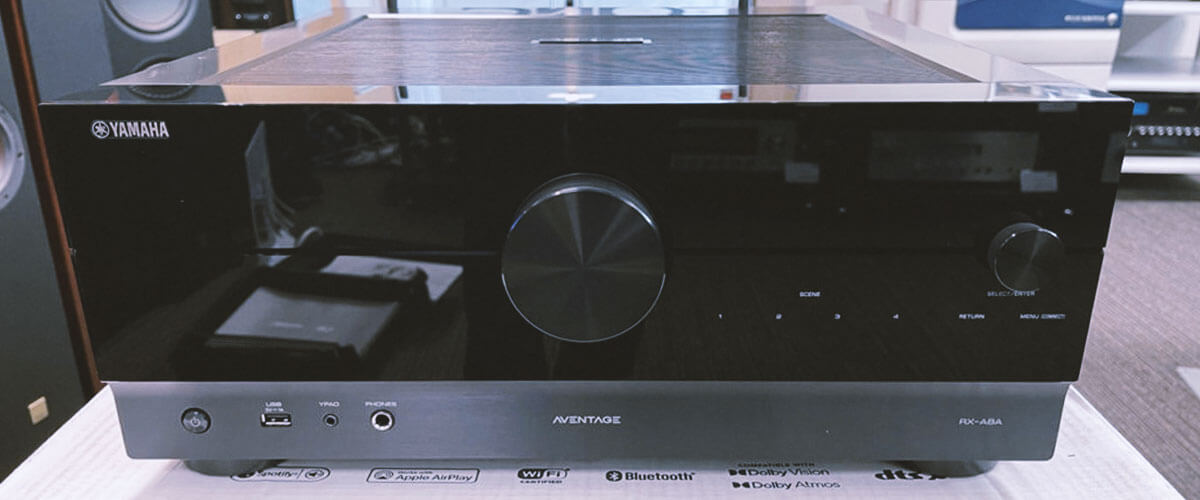
In the audio realm, there are some special pluses. In addition to Dolby Atmos, Auro-3D, and DTS:X sound, the receiver is equipped with CINEMA DSP HD3 concert sound technology. Its background effect adds to the experience when you hear this beast. And it also broadcasts audio to 4 zones, so it’s sure to suit those with a large home. You can stream high-quality video and audio to the bedroom (if the living room and nursery areas are already occupied) or the dining room. Also, unlike the Denon AVR-X3800H and Onkyo TX-RZ50, the RX-A6A works with a wider range of streaming services and voice assistants, and most of them are built into the unit, which enhances the quality of audio streaming.
Yamaha RX-A6A is a great choice for those who appreciate quality and are willing to pay for it, as it costs almost a thousand dollars more than its predecessors. It even looks high-end compared to the Onkyo TX-RZ50 and Denon AVR-X3800H. This powerful receiver (150W vs. 110-120W in previous models) with system expansion capabilities (up to 11.2 channels), built-in wireless technologies, and support for the most advanced 8K video and surround sound formats (on par with previous models, and also taking into account the presence of CINEMA DSP HD3 technology, but take IMAX) will be a great option for a large home. You can create as many as 4 zones with it. So, the advantages are obvious.
And yet, Yamaha has one glaring differentiator. The brand has a cool, crystalline, ringing sound that fans love and detractors dislike. You have to familiarize yourself with it beforehand to know which camp to join. Also, the attractive design promises you’ll care a lot about it, and the built-in LCD is completely unviewable.
Key specs
- Channels: 9.2.
- Power output: 150W/8 Ohm.
- HDMI inputs/outputs: 7/3.
- Video functions: 8K/60Hz, 4K/120Hz, 4K/60Hz pass-through, video upconversion (up to 1080p and 8K) for analog and HDMI sources.
- Bluetooth/Wi-Fi: yes/yes.
- Streaming services: AirPlay2, Deezer, Tidal, Pandora, SiriusXM, Napster, SoundCloud, Amazon Music, Amazon Music HD, Mood mix.
- Supports: HDMI ARC, HDMI eARC, HDMI CEC, HDCP2.3, HDR10, HDR10+, Dolby Vision.
- Surround sound: DTS HD Master, DTS Neural:X, Dolby TrueHD, Dolby Surround, Dolby Digital Plus, Dolby Atmos Height Virtualization, Dolby Atmos, Auro-3D.
Pros
- Beautiful and reliable heavy construction that speaks of high-quality internal components.
- The highest power output compared to other models – 150 watts.
- 4 Zone Multi-room.
- DTS:X with CINEMA DSP HD3 for concert-level sound.
Cons
- Only 2 subs like the Onkyo TX-RZ50.
- Very small and uncomfortable LCD.
Marantz SR7015
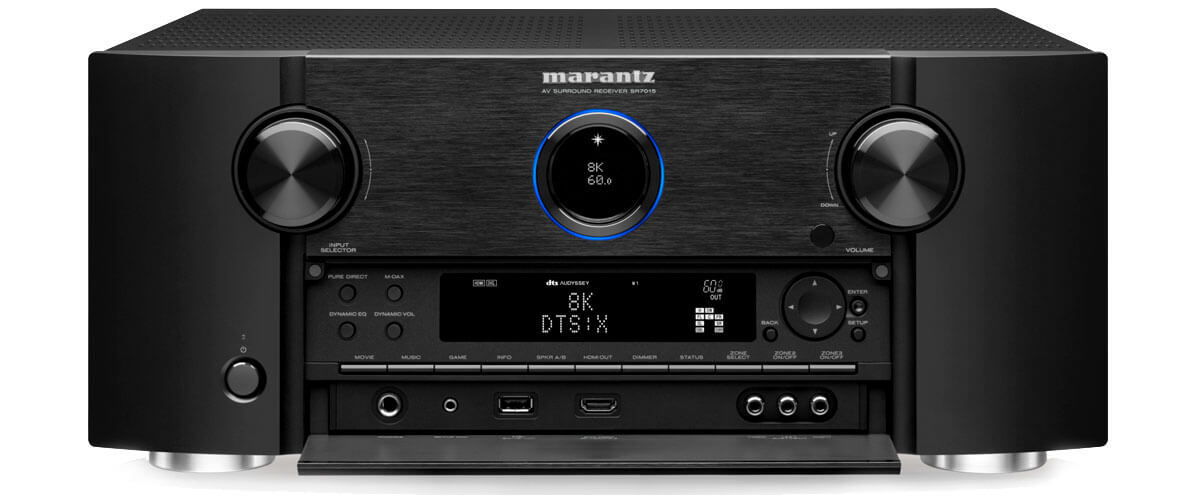
The Marantz SR7015 is another premium 9.2 AVR on my list. Its price is between the Yamaha RX-A6A and the Denon AVR-X3800H, and it is just as likely as the others to be used for an 11.2 system. The receiver’s power rating is also in the middle of the previous data and is 125W (8 Ohm, 20 Hz – 20 kHz, 0.05% 2ch).
The SR7015 has the highest number of HDMI ports of my entire top. But the receiver was released in 2020, so only 1 input and 2 outputs support 8K video resolution operation. It’s worse than the competition but good enough for today’s content.
In the wireless area, things are very good. The AVR integrates dual-band Wi-Fi (including Apple AirPlay 2), Bluetooth, and multimedia HEOS for streaming services and voice assistants (Amazon Alexa, Google Assistant, and Siri).
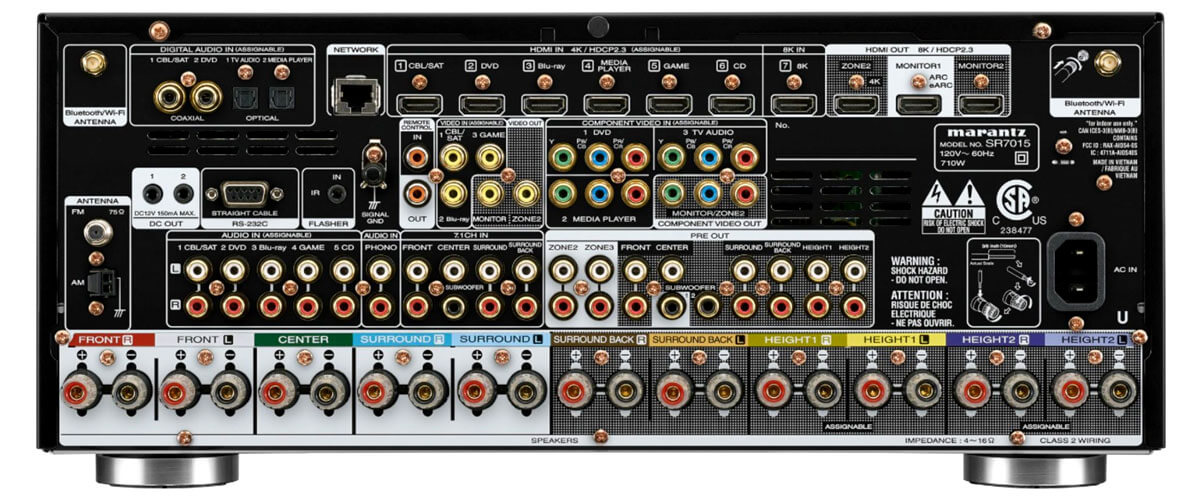
Surround sound is available in a full range of the highest-quality formats available today. These include Dolby Atmos, Dolby Atmos Height Virtualization Technology, DTS:X, DTS Virtual:X, IMAX Enhanced, and Auro-3D. And here, perhaps, finally, I’d like to tell you about the SR7015’s sound. It’s all about the unique warm tone and unchanged technology Marantz has used for years. HDAM modules make the sound much more detailed than other receivers, and Multi-room is available in 3 zones. I was also impressed with the “music in surround sound” performance. Sure, stereo is still stereo, but the music is streamed through each speaker, and it’s just a separate effect to your ears. Also worth mentioning is Audyssey MultEQ’s most user-friendly room correction system, which easily handles the adjustment of all 11 channels by asking questions on the on-screen menu. And even without manual intervention, it creates a sound picture that will satisfy the average user.
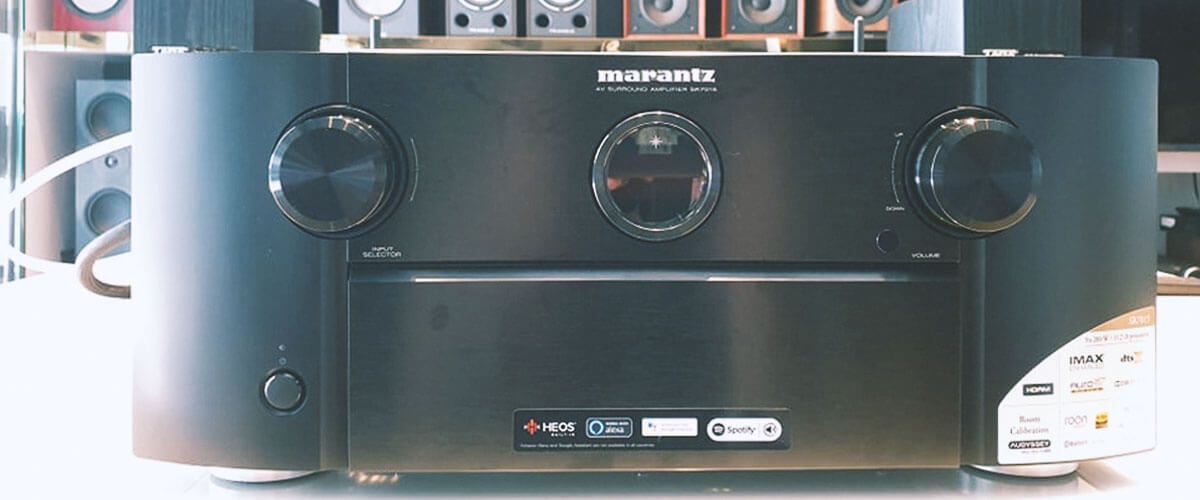
Marantz SR7015 is an excellent receiver with 9 channels of amplification, worthy of a place in my selection. It represents a “golden mean” where all areas are balanced, so you can watch movies in the highest quality with the most advanced surround sound and listen to music from streaming services and turntables because Marantz is especially good with vinyl.
Key specs
- Channels: 9.2.
- Power output: 125W/8 Ohm, 165W/6 Ohm.
- HDMI inputs/outputs: 8/3.
- Video functions: 8K/60Hz, 4K/120Hz, 4K/60Hz pass-through, video upconversion (up to 1080p and 8K) for analog and HDMI sources.
- Bluetooth/Wi-Fi: yes/yes.
- Streaming services: AirPlay2, Deezer, Tidal, Pandora, SiriusXM, Napster, SoundCloud, Amazon Music, Amazon Music HD, Mood mix.
- Supports: HDMI ARC, HDMI eARC, HDMI CEC, HDCP2.3, HDR10, HDR10+, Dolby Vision.
- Surround sound: DTS HD Master, DTS Neural:X, Dolby TrueHD, Dolby Surround, Dolby Digital Plus, Dolby Atmos Height Virtualization, Dolby Atmos, Auro-3D, IMAX Enhanced, Multichannel stereo.
Pros
- More HDMI ports than other receivers in the selection.
- Incredibly cozy, warm sound looks realistic and maximally detailed.
- Music in stereo sounds from all speakers, creating a “multi-channel stereo” effect.
- Simple and user-friendly Audyssey MultEQ calibration system.
Cons
- Only 1 HDMI input supports 8K video.
Pioneer Elite VSX-LX505
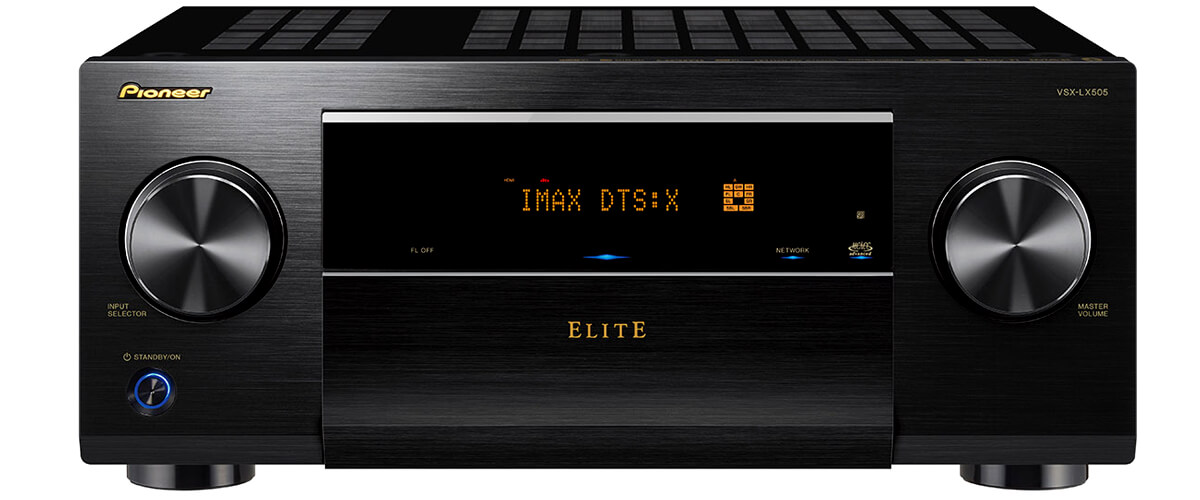
Rounding out my chart is the 9.2-channel Pioneer Elite VSX-LX505 with the ability to expand the surround sound system to 11 channels. In many ways, it resembles the leader of the list, Denon AVR-X3800H, including the identical price of the receivers. Although it uses only 2 subs, it offers slightly more power at 120W (8 Ohms, 20Hz-20kHz, THD 0.08%, 2ch).
The receiver has 7/2 HDMI ports, but since the model was released in 2021, 6 of them (unlike the Marantz SR7015) support 8K video resolution, with HDCP 2.3, ARC, and eARC functionality.
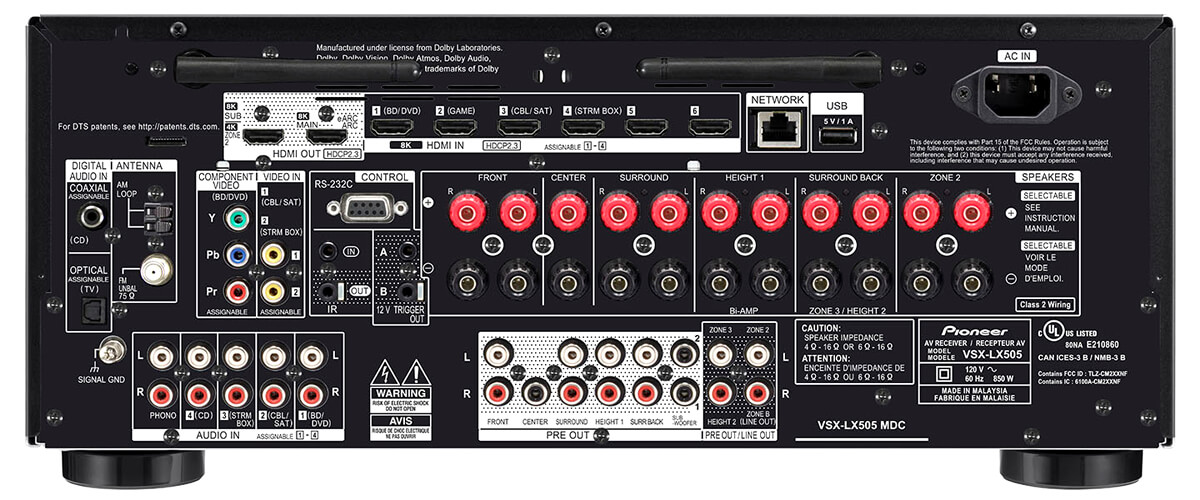
Among the surround sound formats supported by the AVR under consideration, there is no Auro-3D only, but you have Multiroom for 3 zones (including 1 for video). In wireless audio streaming, there’s DTS Play-Fi (via Pioneer Music Control App), AirPlay 2, Bluetooth with support for AAC and aptX HD codecs, and built-in Chromecast. So, the Pioneer Elite VSX-LX505 will work with any tablet or smartphone.
The outright disadvantage of the Pioneer Elite VSX-LX505 is the MCACC calibration system. It is rightly considered the most primitive and will not create for you a sound picture worthy of a 9-channel system. The manufacturer compensated for this with an additional room correction system, Dirac Live. Still, it isn’t very easy and requires a lot of time, especially if you are unfamiliar.
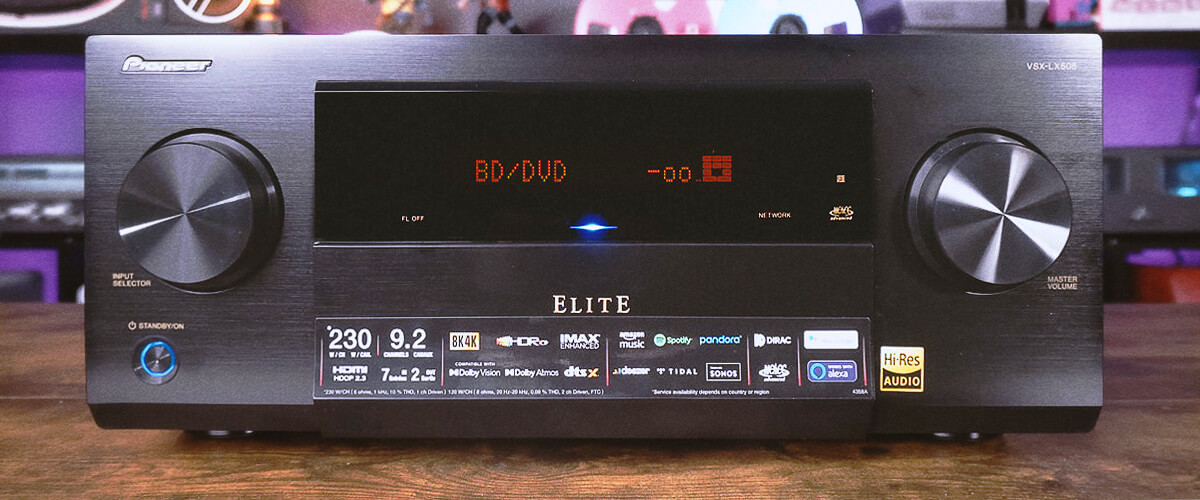
If in surround sound, I have no complaints about the receiver; everything is quite smooth, as always with Pioneer, without frills and cries of admiration; it is very good.
The Pioneer Elite VSX-LX505 is a decent 9-channel receiver for home use. Except for some tolerable shortcomings, overall, the AVR performs well and will suit the unassuming user who is not chasing prestige and wants to save money.
Key specs
- Channels: 9.2.
- Power output: 120W/8 Ohm, 230W/6 Ohm.
- HDMI inputs/outputs: 7/2.
- Video functions: 8K/60Hz, 4K/60Hz, 4K/120Hz, upscaling to 8K.
- Bluetooth/Wi-Fi: yes/yes.
- Streaming services: AirPlay 2, Spotify, TuneIn, Deezer, Tidal, Netflix, Amazon Prime.
- Supports: HDMI ARC, HDMI eARC, HDMI CEC, HDCP2.3, HGL, HDR10, HDR10+, Dolby Vision.
- Surround sound: DTS:X, DTS Neural:X, Dolby Atmos, DTS HD Master, Dolby Atmos Height Virtualizer, Dolby TrueHD, Dolby Digital Plus, IMAX Enhanced, Dirac Live.
Pros
- More power (120W) and HDMI (7/2) than the leader of the Denon AVR-X3800H selection.
- Wide range of advanced wireless streaming options.
Cons
- Does not support Auro-3D.
- MCACC room correction system is primitive, while Dirac Live is complex.
What is 9.2 surround sound?
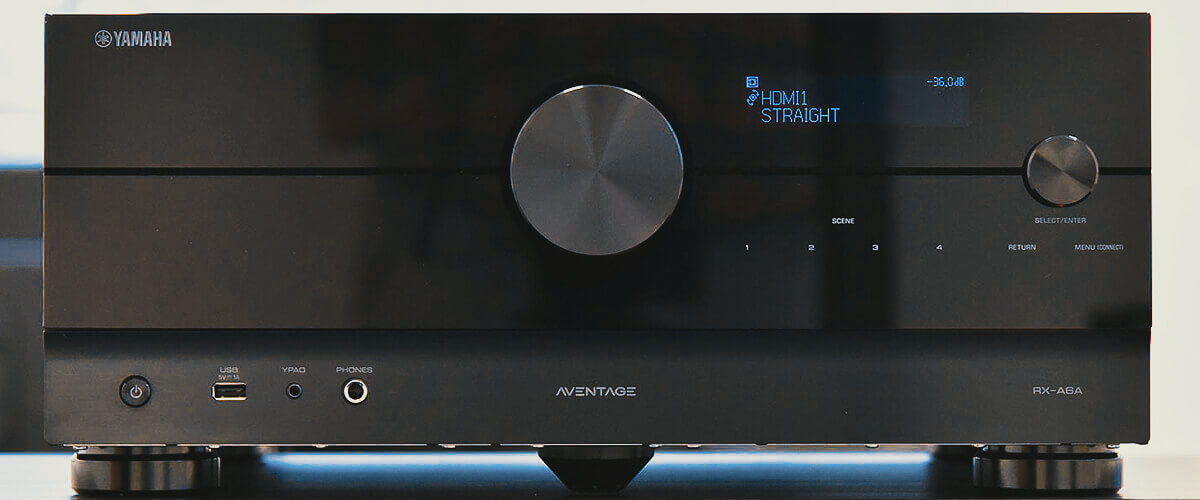
Explanation of the 9.2 system
To understand what a 9.2 system (where 2 is the number of subwoofers) is, we first need to understand the capabilities of simpler systems with 5 and 7 channels.
The 5.1/5.2 system uses standard surround sound formats Dolby TrueHD and DTS HD Master. The 7.1/7.2 system expands the previous configuration by adding two rear channels. With the 5.1.2/5.2.2 configuration (where the second 2 is the number of ceiling channels), a popular surround sound format such as Dolby Atmos is available.
The 9.2 surround system extends the capabilities of the 7.1 system by adding two additional “height” or “overhead” speakers (5.2.4 configuration). This advanced speaker setup provides a wider and more spacious soundstage, taking the audiovisual experience to new heights.
Supported surround sound formats
In addition to decoding Dolby Atmos discrete signals, the 9.2 system is also designed to support surround sound formats, including:
- Dolby Pro Logic IIz: This surround format is not as immersive as Atmos but still offers (mixes) additional height channels to create a more spacious soundscape.
- Auro-3D: A unique surround sound format that uses the height channels as a layer of 4 speakers (5.1.4). These additional speakers are simply installed on top of the existing front and side speakers, and of course, this design cannot be used for Dolby Atmos either.
Pros and cons
Pros
- Immersive sound: The height channels add depth, making movies and games more realistic.
- Flexible configuration: The 9.2 system can adapt to different room sizes and layouts, making it versatile for various home theater systems. It also supports a large number of immersive formats.
Cons
- Cost: Besides the high price of a receiver with 9 channels, you’ll also need more speakers.
- Bulky installation: You will need space to accommodate a home theater system with 9 channels.
- Limited content: While more and more content is becoming available in 3D audio formats, it’s not as prevalent as traditional formats, which may limit your choices.
FAQ
What is the approximate price of a 9-channel receiver?
Can I use a 9.2 AV receiver with a 7.1 or 5.1 speaker setup?
Is having identical speakers for all positions in a 9.2 setup necessary?
Can I use a 9.2 AV receiver in a bi-amp configuration?
Is the calibration process complicated for a 9.2 setup?
We are supported by our audience. When you purchase through links on our site, we may earn an affiliate commission at no extra cost to you.
Our newsletter
* We will never send you spam or share your email with third parties

![Best Budget Receivers [Reviewed and Tested]](https://thetechholics.com/wp-content/uploads/2023/10/best-budget-av-receiver-300x150.jpg)

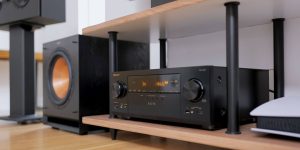
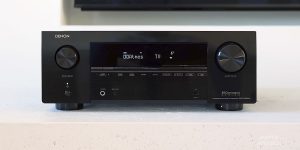
![Pioneer vs Denon Receivers [Top Models Compared and Tested]](https://thetechholics.com/wp-content/uploads/2023/10/denon-vs-pioneer-review-300x150.jpg)
